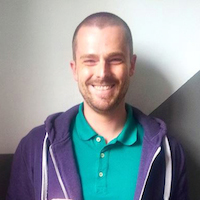Sitting in the Zendo, in our Soto Zen tradition, we are sitting with our face to the wall.
A proper distance, at a 45º angle.
When I am taking out my spray cans, I quite often nearly have the same distance to the wall.
I started writing Graffiti in my early teenage years, in 1988/1989. In Germany and Europe, this still have been the years of an evolving young Hiphop Culture, which has been a culture—as part of it´s roots—with a message of positivity and taking circumstances as a chance to change your life.
Early Writers, Rappers, DJs and Breakers tried to take the chance of their creativity to make a more peaceful way out of their background, often one of a Ghetto life with not much possibilities. Using what they got, they relied on dancing or spraying. They’d battle with each other and let the one who had more skills be the winner.

The first Hiphop Jams which got to happen in the Bronx in New York City where managed by the Universal Zulu Nation, which was initiated by Africa Bambataa, a former Gang member.
The Zulu Nation tried to set spiritual and social meanings to this evolving culture, and also based those Jams on the level of being peaceful and respectful with each other. Entering one of those early Hiphop Jams, you were not allowed to consume alcohol, drugs or carry any weapons; your “weapon of choice” could only be your skills as a Dancer, Writer, Rapper or DJ.
When I started doing Graffiti art here in Germany, those paths had influenced me strongly, not just by the way of behaviour by the people I got to know in our Hiphop Movement.
I also became a member of the Zulu Nation in 1992.

Starting in 1991, I spray painted various commissioned work for Cities, companies, schools, magazines and private persons. Graffiti helped me develop my interest in arts. I later on studied and made my Diploma at a University of Applied Arts and Design, and a University of Fine Arts. I made Drawings, Objects and Installations, that have been exhibited in Galleries, Museums and Off Spaces within the last 15 years.
I taught at a school for Arts and Design for six years. Then in 2001, I started meditating.
Later, I found my way into a Tibetan Buddhist lineage and then moved into the Zen Buddhist lineage I am in today. I ordained a couple of years ago, and am now sewing on my Kesa (monk’s robes), preparing for the second ordination to become a Zen Monk. I am meditating daily and lead Zazen in our Zendo—or sometimes even in the streets.
I often go to Sesshins (Retreats) in Zen Centers or Monasteries.
I restarted Spray painting years ago with some old (and new) friends, with little intention other than fun and the hope of some commissioned work. Soon I realized that I was not making graffiti art the same way that I was before, so I decided to paint what was meaningful to me now.

I have already spray painted 28 Zen Monks on my own and with other artists.
Graffiti writers I have worked with ever since have been open and interested in working with me, and getting to know more about why I paint Zen Monks.
When People pass by while I spray, they take a break, have a look, and are mostly very interested.
I had a lot of talks about finding peace in our times, mindfulness, meditation and what my monks could mean or stand for.
The places I paint vary between walls under a bridge in dirty surroundings to newly built high class neighborhoods or train stations. There are always a lot of people passing by, being in a hurry or just not paying much attention to what happens around them.
As I got to know from our Zazen on the street, there is a need to slow down, take a deep breath, and open up a bit. Maybe my sprayed monks make a bit of an example, while we are not there ourselves.

When someone told me that people complained about one of my monks having been destroyed with paint by some stranger, I took some free time, smiled and told him to “hold his position.“
Love elephant and want to go steady?
Sign up for our (curated) daily and weekly newsletters!
Author: Jens Jansen
Editor: Renée Picard
Photo: all images are of original artwork by the author via the author



Read 7 comments and reply